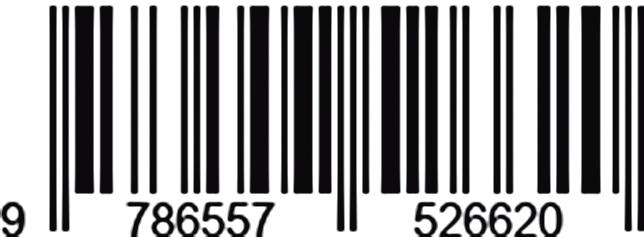






Name
Class
Academic Year

Lesson 1 To Be or Not to Bee
Lesson 1 To Be or Not to Bee
Lesson 2 Pollinators
Lesson 2 Pollinators
Lesson 2 Pollinators
Lesson 3 Garden Scouts
Lesson 3 Garden Scouts
Lesson 4 From Flower to Fruit
Lesson 4 From Flower to Fruit Take Action Decoding Messages
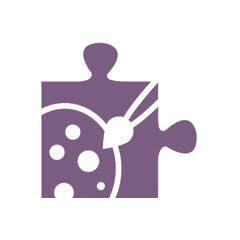












Students explore bees as a symbol of biodiversity through symbol and hieroglyphics.
Completing sentences by choosing the correct homophone.
Students learn about plants and their pollinators through a matching game.
Students draw a forest with bee-friendly plants and trees.
Learning how to write simple words associated with the bee world in a spelling bee activity.
Identifying and drawing a bee-friendly garden.
Students find and name things in nature during a walk in the garden or forest.
Students learn about parts of a bee by labeling it.
Learning about the pollinating process from pollinator to flower to fruit.
Students learn how to support stingless and solitary bees (life on land) by planting bee-friendly plants.















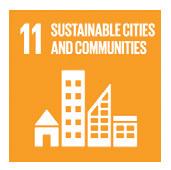
and completing the life cycle of
Students learn to identify the 3 types of honey bees – worker, drone and queen bee – by measuring them.
Spotting the queen amongst the other types of bees.
Extending vocabulary with collective nouns about animals and insects, for example “a swarm of bees”.
Completing a chart of the way bees see a field of flowers.
Learning to follow dotted lines to form a figure 8 which corresponds to the dance a bee makes when it finds a field full of nectar-rich flowers.
Students make their own hokey pokey waggle dance through a fun interactive game.
Non-verbal communication through a matching game where students combine animals with their sounds.
Creating simple poetry through a game using onomatopoeias.
Exploring smells and the important messages they give.
Learning new words (adjectives) to describe smells and scents.
Students learn why working together is important and that everyone has a job in the group.
Lesson 1
The
Lesson 1
The
Lesson 1
The Hive
Lesson 1
The Hive
Lesson 1
The Hive
Lesson 2
Shapes in Nature
Lesson 2
Shapes in Nature
Lesson 2
Shapes in Nature
Lesson 3
Body Ruled Measurements
Lesson 3
Body Ruled Measurements
Lesson 4
Bee Inspired Architecture
Lesson 4
Bee Inspired Architecture
One Family, Many Homes
A Home for the Family of Bees
Animal Homes



My Home
Many Animals, Many Homes
Hexagons in the Honeycombs



Hexagons and Honeycombs







Discovery of different materials used to make hives together with a matching activity.
Students apply their creativity to invent their own beehive.
Students learn about animals and their homes through a matching game.
Students use their imagination to make their dream house and describe it to the other students.
Group memory matching game that students play to explore a variety of animals and their homes.
Exploration of shapes in a honeycomb and connecting the dots to make as many hexagons as the students can.
Learning about how bees use the honeycomb in their hive.
Students learn the vocabulary around shapes in nature from circles to squares, triangles, ovals and hexagons.
Students explore how bees build honeycombs to learn about measuring and its practical applications in construction.
Students learn the vocabulary linked with units of measure using body parts like thumbs, feet, and hands.
Students apply their creativity to draw a bee inspired building.
Students expand on their vocabulary by learning that some words have numbers in them.
Students explore their city or town in the search for bee-inspired architecture and draw what they find.
Lesson 1 The Beekeeper
Lesson 1 The Beekeeper
Lesson 2 As Sweet As Honey
Lesson 2 As Sweet As Honey
Lesson 3 Mind Your Beeswax
Lesson 3 Mind Your Beeswax
Lesson 4 Busy Bees
Lesson 4 Busy Bees Beekeepers throughout Time Beekeepers’ Tools Honey, the










Students listen to the legend of the Tupi-Guarani indigenous tribe about the importance of bees, then draw a picture to illustrate the story.
Students extend their vocabulary by learning about beekeeper’s tools through a matching game.
Students learn about honey as a forever ingredient with the Brazilian Honey Cakes (Pão de Mel) recipe.
An engaging language game that matches similes with foods and flavors.
Exploring beeswax and how it can be used and reused in different ways because of its ability to change shape.
Students learn to create new words by combining two words together.
Designing and drawing a bee hotel for solitary bees.
Students extend their vocabulary by matching and making drawings of animals with their sayings.
Visiting a bee farm and drawing a picture of the event.
Making a group promise and plan (manifesto) on what the class will do to help bees in their region.
Just Bee is an English Language Learning program designed for primary-aged children. Inspired by the fascinating world of bees, it enriches students’ English vocabulary as well as promoting Sustainable Action. Bees have been our companions since the beginning of time and today symbolize biodiversity. Through Just Bee, children learn that maintaining a balance with nature - without harming or destroying it - is possible, Just as Bees do!
Color and cut out your bee.
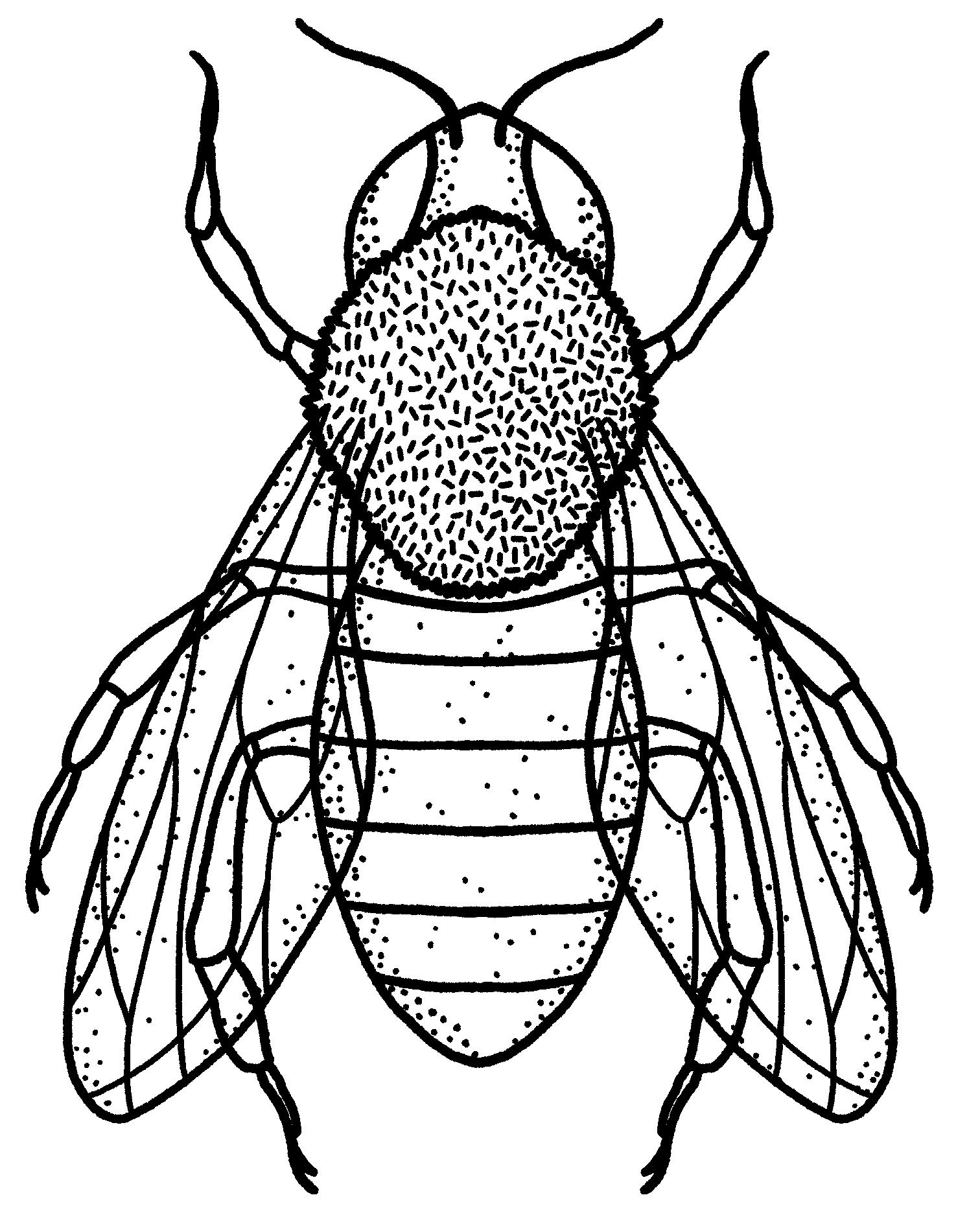
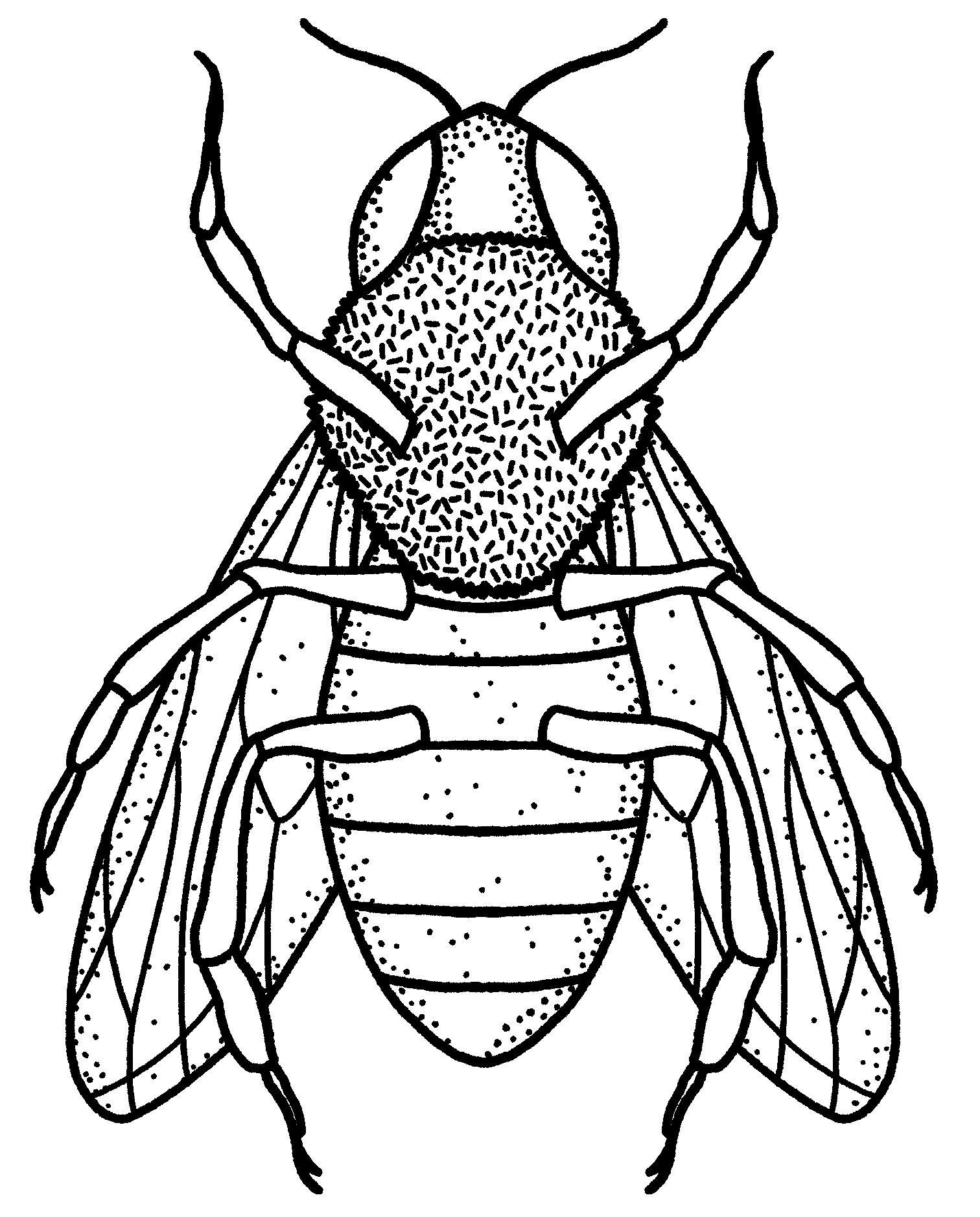
Place your Bee here.

Below are hieroglyphics used to express concepts about honey bees.
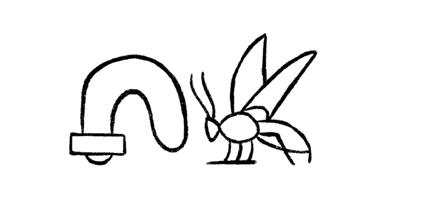
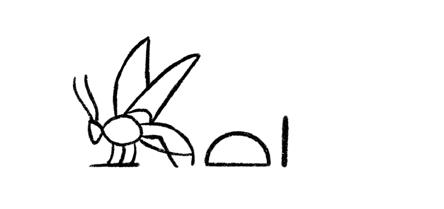


Make your own message about why bees are important using the ancient Egyptian symbols. If you need more symbols, you can make your own.

Below are some examples of homophones with their pictures:
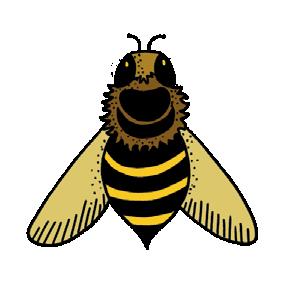
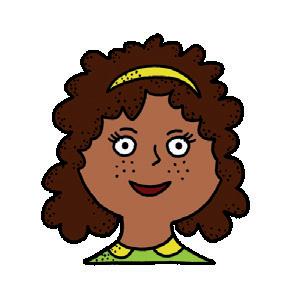
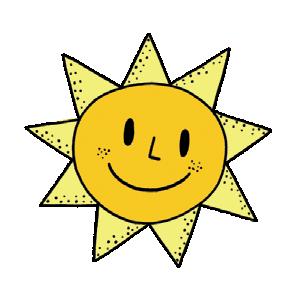
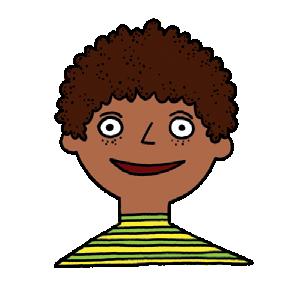
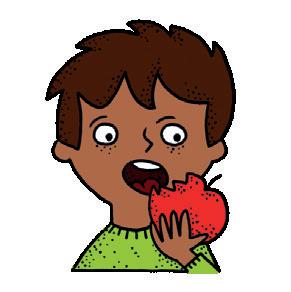
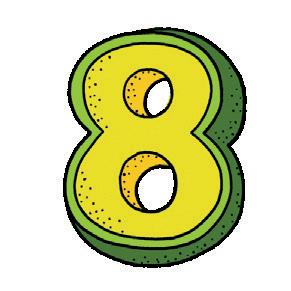


Draw the correct picture next to the word to complete these sentences:
The [bee] collects nectar from the [flower]
The [sun] shines in the sky.
I [ate] breakfast at [eight] O’Clock.
Watch out! Homophones can be tricky. Use some of the homophone pictures above to make your own silly sentences.

Plants and their Pollinators
Below is a list of helpers, with their matching fruit that they like to visit and pollinate:
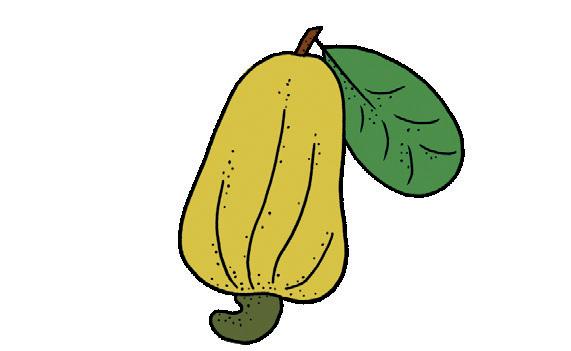
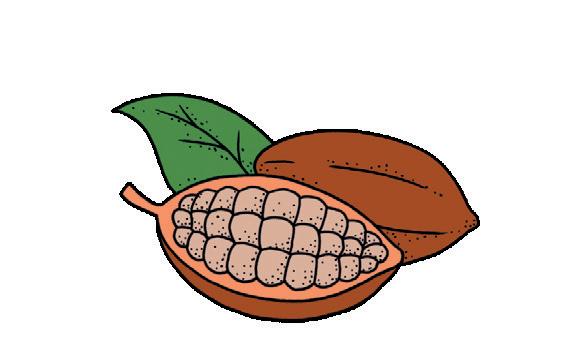
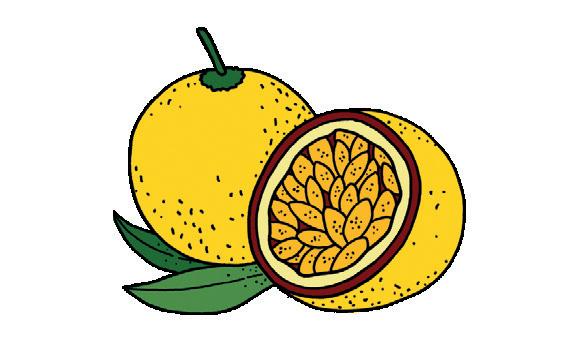
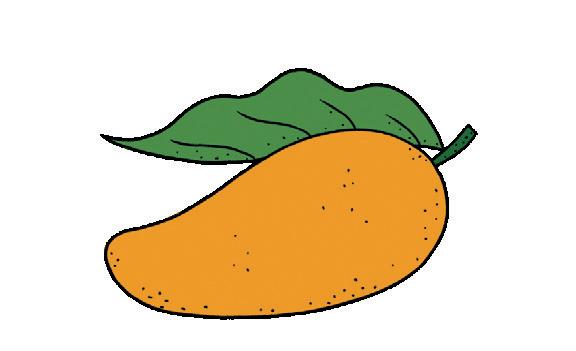
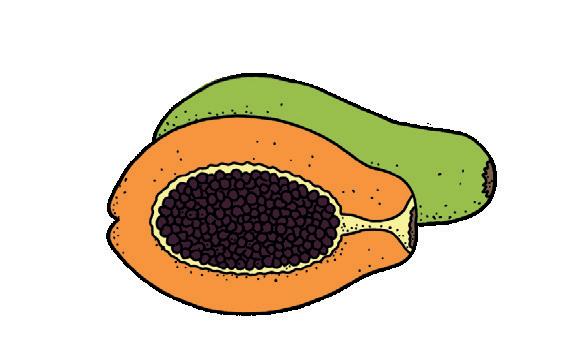


Midges [tiny flies that inhabit the rainforest.]
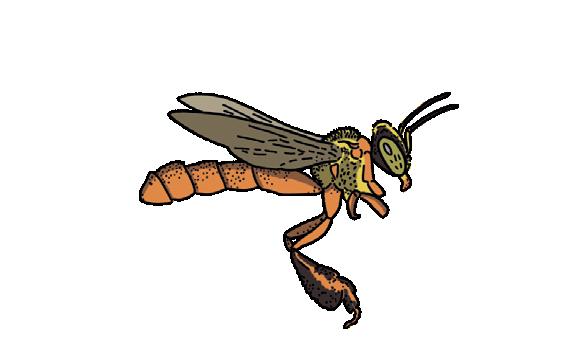
[tiny stingless black bee with yellow stripes.]
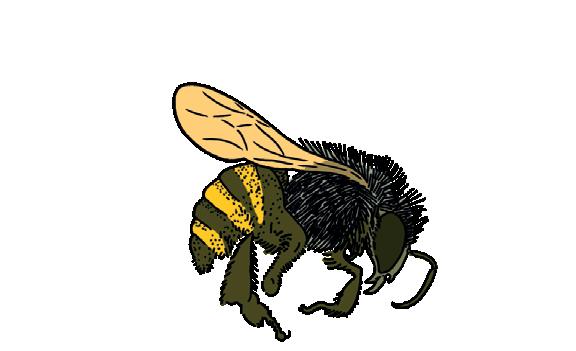
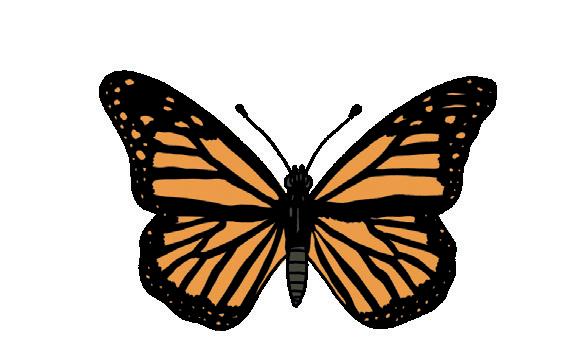

Complete the drawing by adding more trees, plants and flowers with their pollinators. You can use the plants and pollinators from page 15.

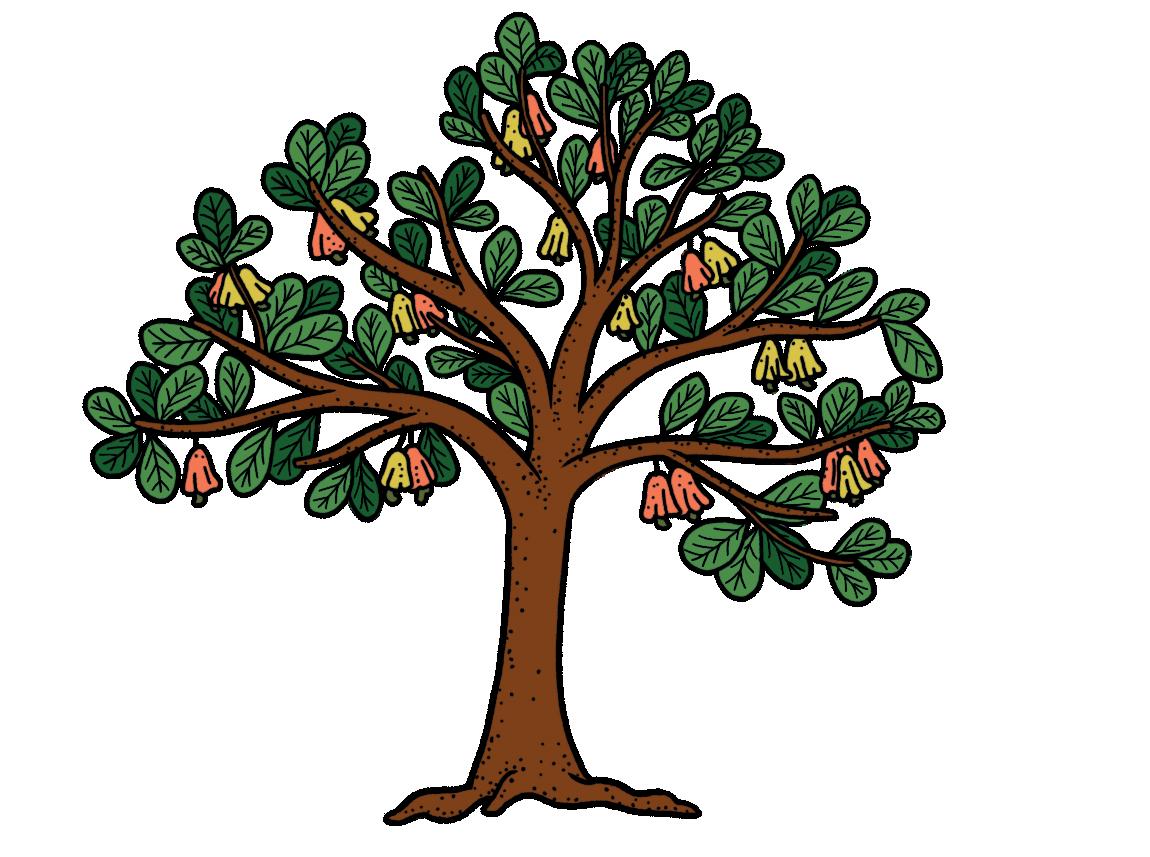

Remember those pictures you drew to create special messages? Your bee is going to become a spelling bee and show you how to transform those symbols into words using letters.
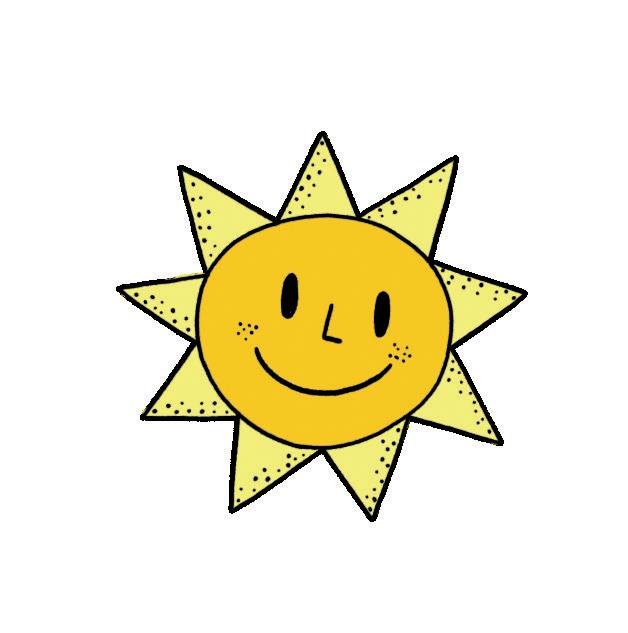


p-l-a-n-t

t-r-e-e
Place the bee you cut out on page 9 next to the words your spelling bee visited.
b-e-e
t-r-e-e
t-h-r-e-e

Draw a bee-friendly garden full of flowering plants and trees that pollinators, especially bees, like to visit.
You can add: papaya trees, mango trees, sunflowers, passion flowers, basil and marigolds.

Put a checkmark next to the things in nature you see on your walk


Can you label each part of the bee? Fill in the missing words
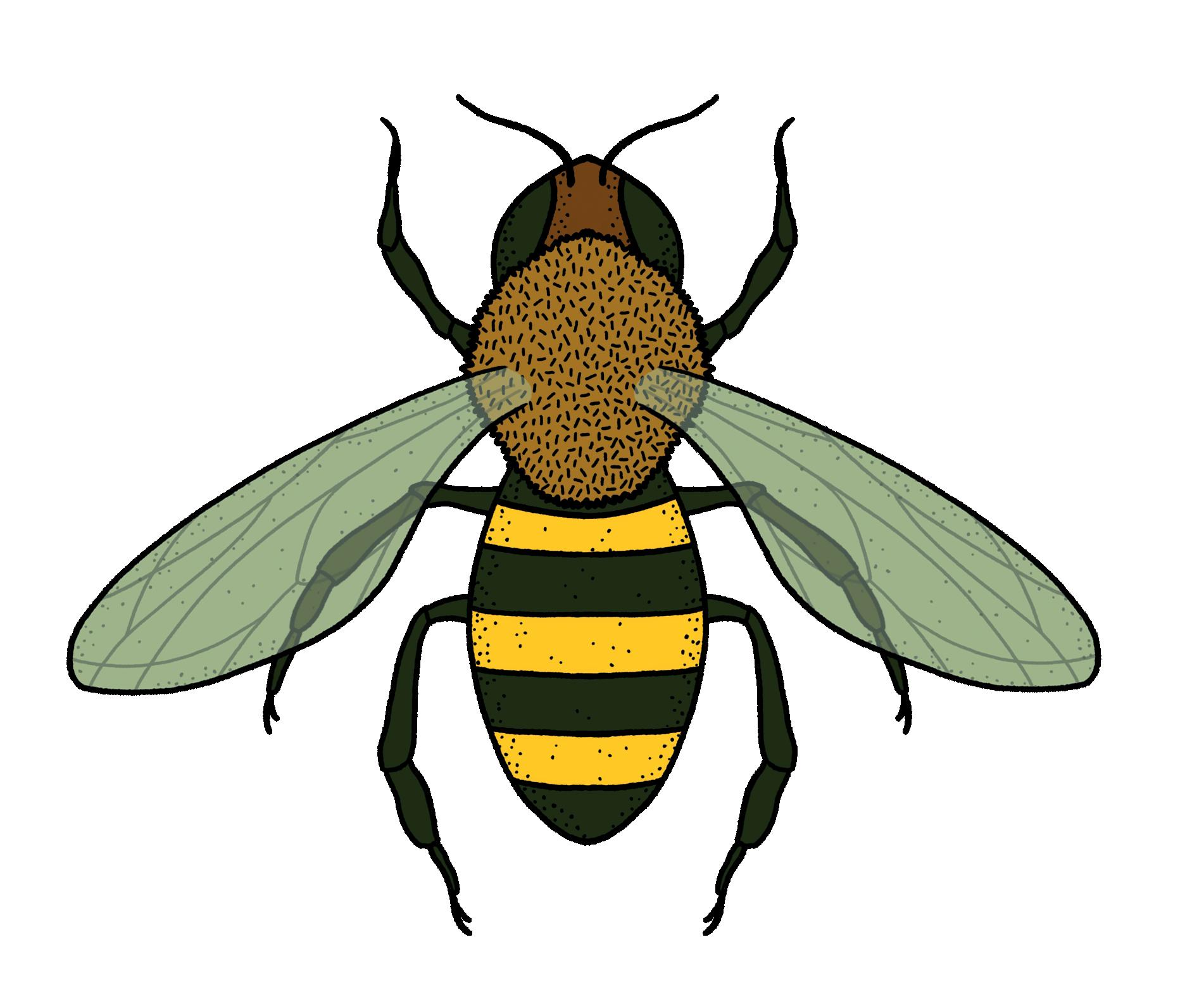

Color the bee’s legs with yellow chalk or a yellow pencil to show the pollen it collected.

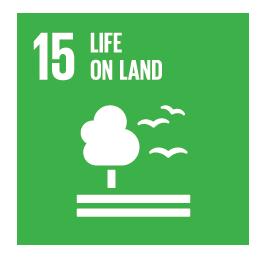
Explore bee-friendly plants by drawing their flowers and/or fruit and seeds in the chart below:
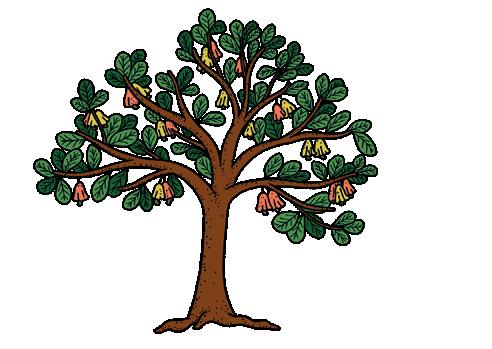

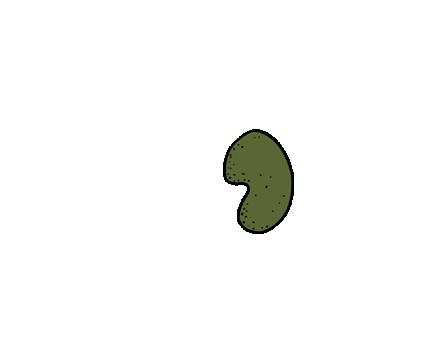
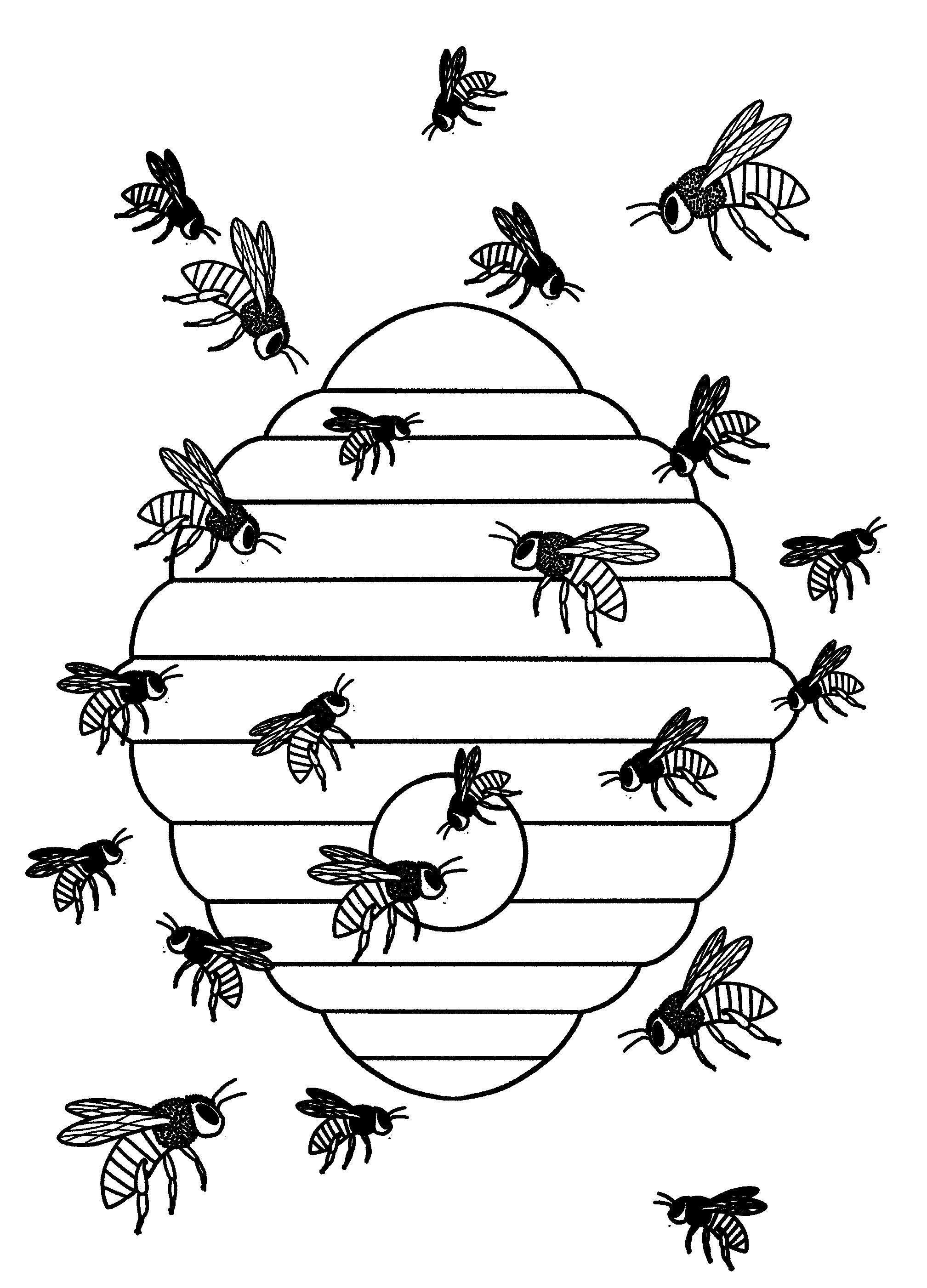

Life Cycle of Honey Bees
Bees start as tiny eggs and grow into bees. Fill in the chart by following the steps.
1
Every egg starts off as a tiny dot. Take a grain of rice and glue it in the first honeycombcell.
2
Larvas are small and soft baby bees. Shape your cotton ball between your fingers and shape it into a worm. Glue it into the second cell.
3 Draw and color the adult bee. 4
A pupa is a young bee that is transforming itself inside its cell to become a grown-up bee. Cover the Pupa’s cell with wax.

Use the line on the side of the page to measure each bee. Write down how big each bee is in the space below.

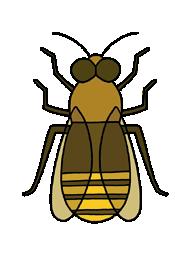

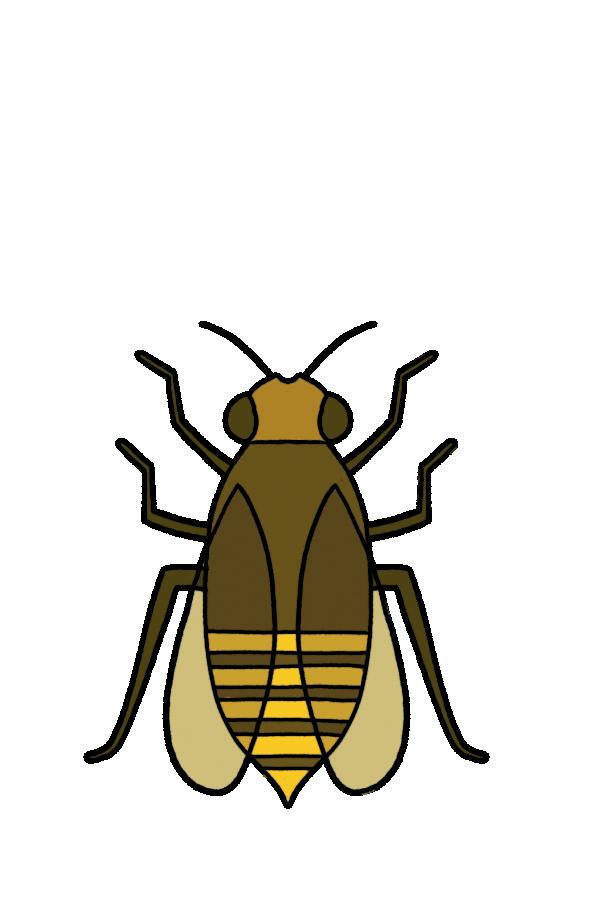
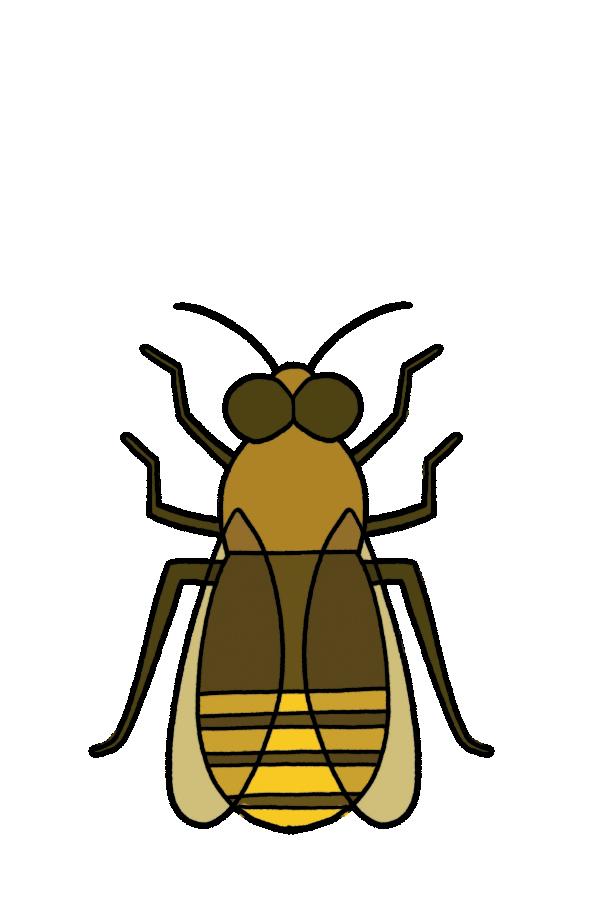


The queen bee is slightly bigger than the other bees. Can you spot the queen bee in this hive? You can find her by looking for the bee with a dot on its back. What do you think the other bees are busy doing?


Collective Nouns
Finish the chart below by drawing the single animal under “Animal or insect” and many animals under the examples of collective nouns, then add a few of your own:
Animal or Insect
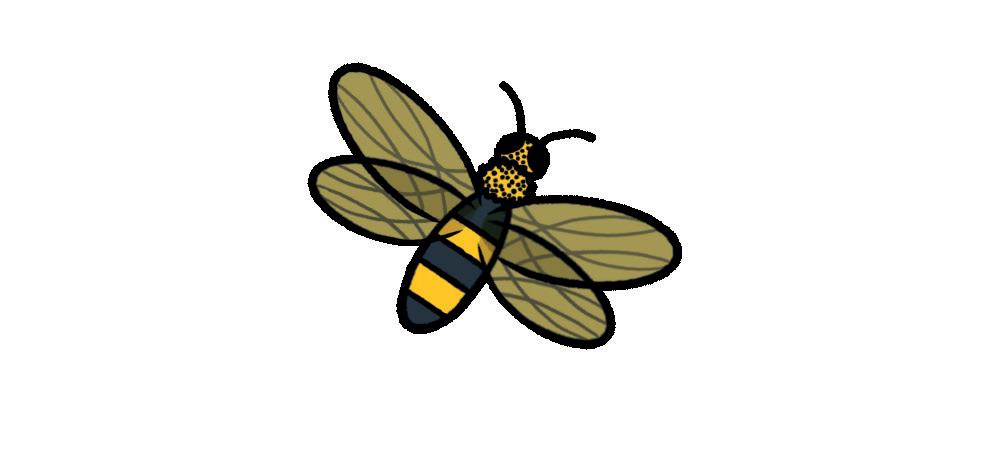
a bee a fish a whale
Collective Noun
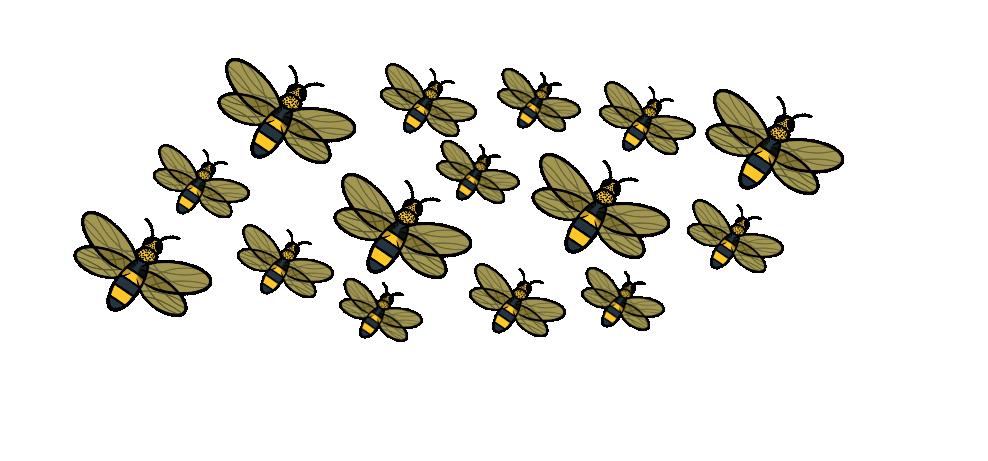
A swarm of bees a school of fish a pod of whales

Complete the chart of how a bee sees a field of flowers with the colors that match the numbers:


Draw an 8 behind the bee that is dancing to let the other bees know where to go. Color the flowers in number 3 you colored in the previous activity.
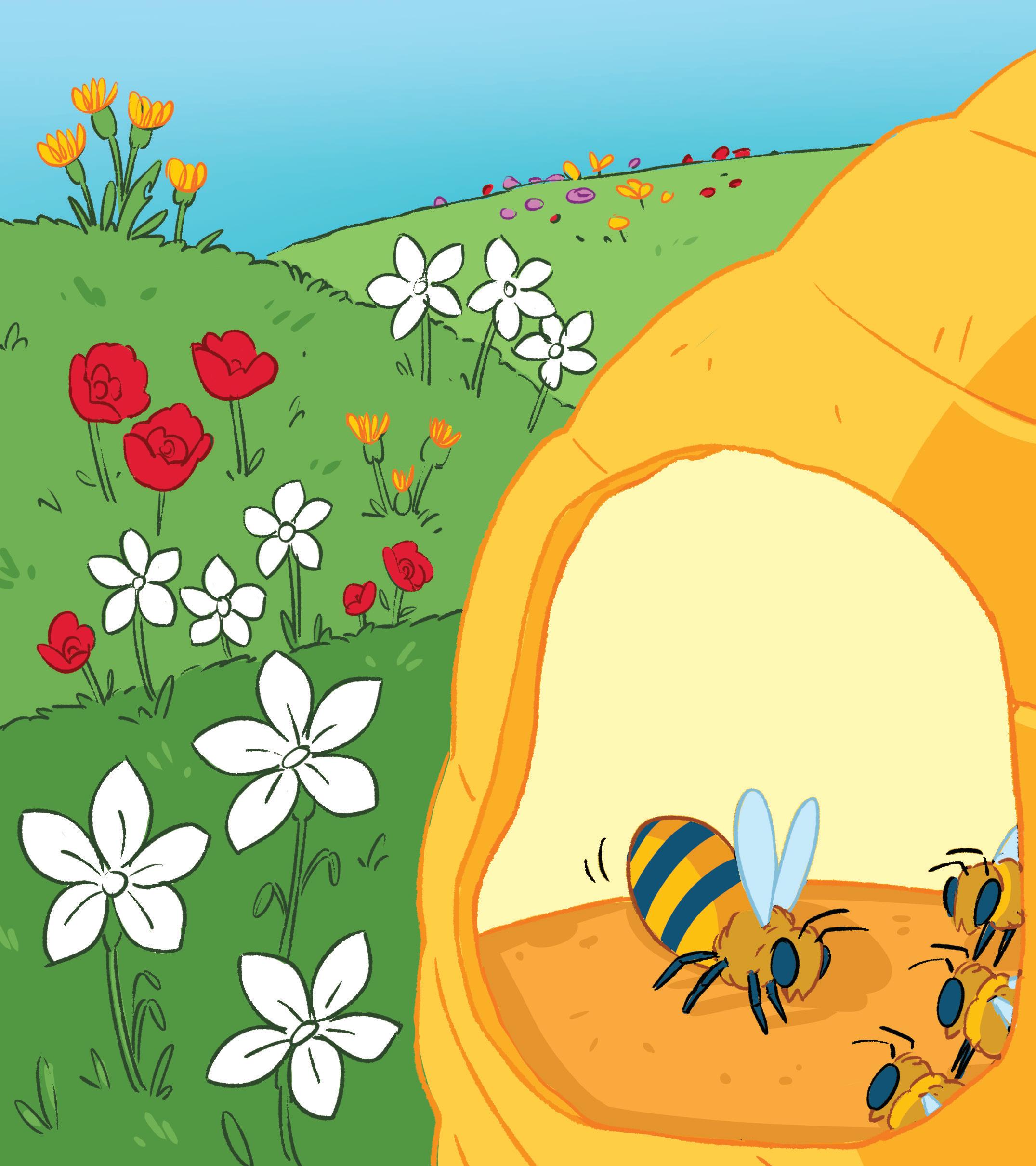

Make your own Hokey Pokey Dance by cutting out and spinning the arrow in the center of the page and seeing where it lands. Repeat 4 times. Write the steps here:
Put your Put your Put your Put your You do a little waggle dance and turn yourself around, and that's what it's all about!
Cut out the arrow
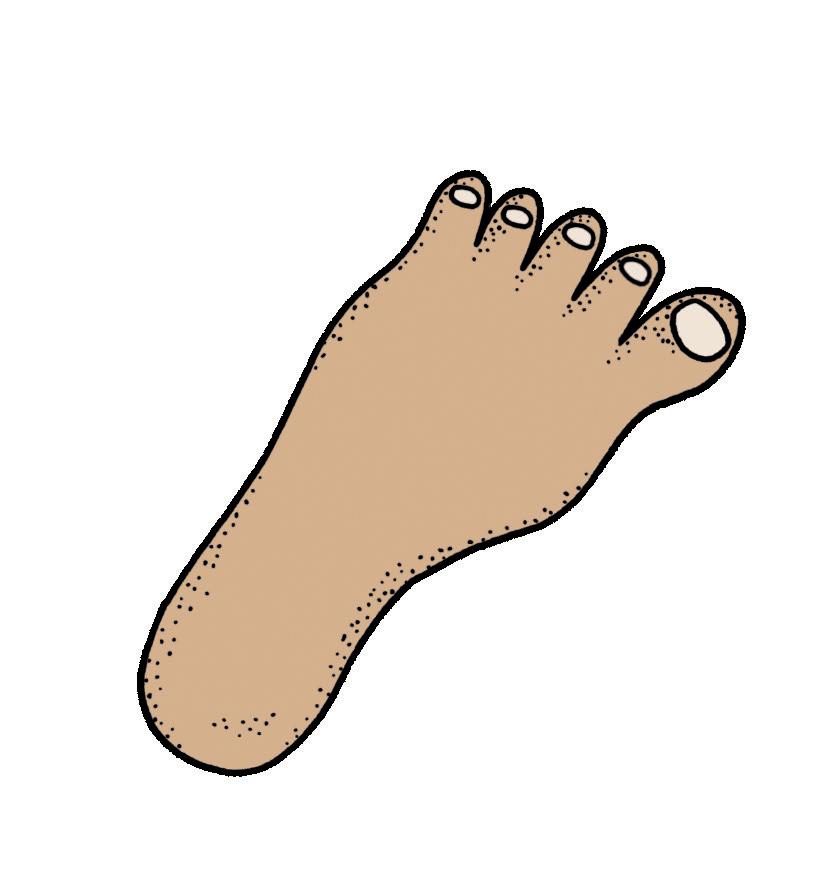
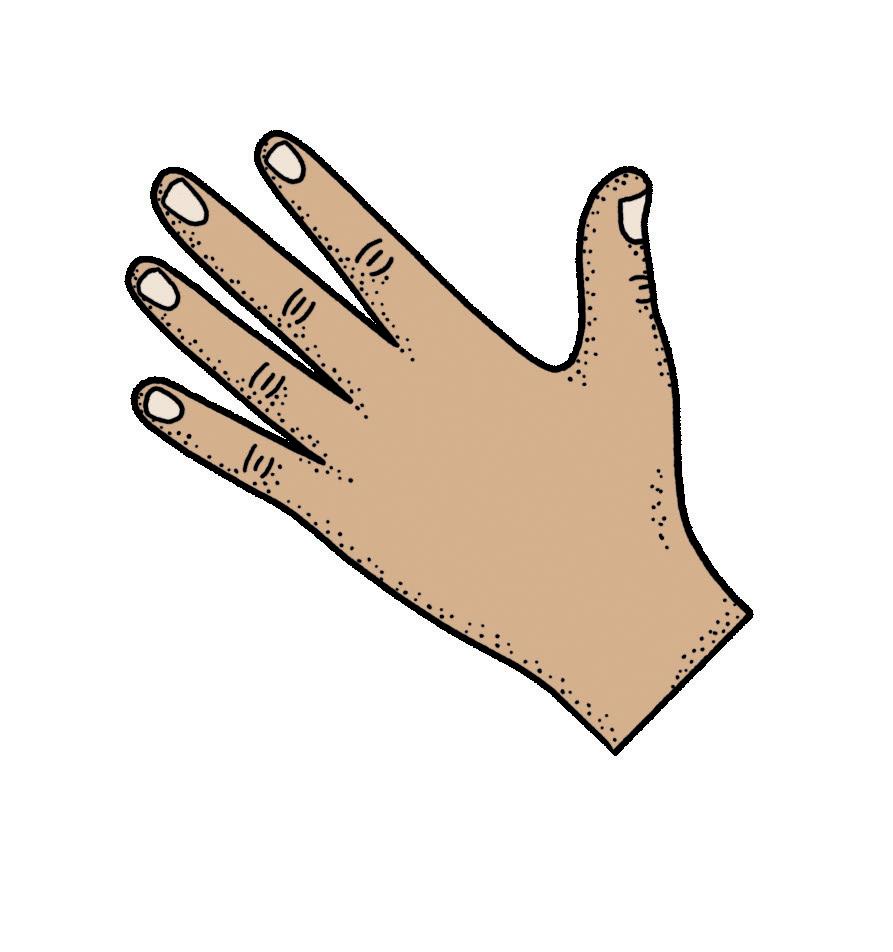
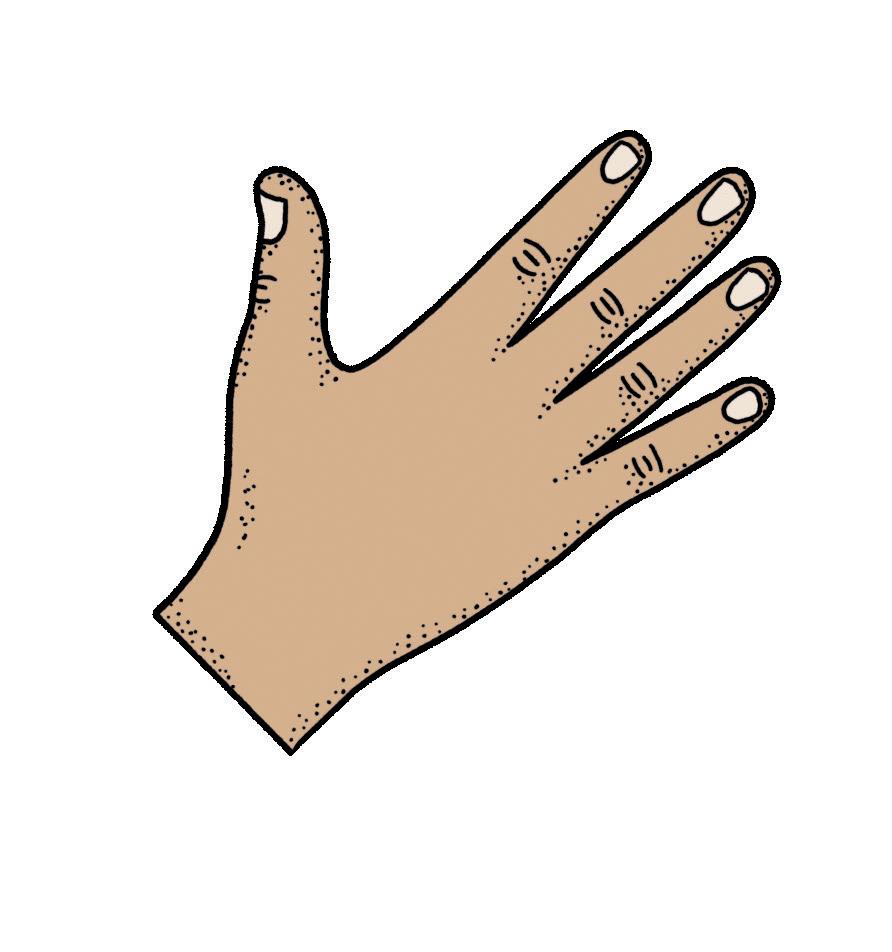


Finish the chart below by drawing the picture of the insect or animal, then find out what sound it makes. Add a few of your own:
or

Cut out these words about bees, mix them up and then put them together to make a poem:

Smell each scent, then color the shape in the color it makes you think of. Draw the fruit or flower you think it is. Which smell or scents do you think bees would like best?

Use the description words to describe the smells on page 39 and write them in the word column. Finish this chart by drawing something that smells like the Description Words (adjectives) :
Smell Words (synonyms)
Description Words (adjectives)
Scent flowery (smells like flowers in a garden)
Odor fruity (smells like fruit, oranges or apples)
Aroma sweet (smells sweet, candy or flowers)
Fragrance fresh (smells like clean air or a new day)
Whiff stinky (doesn’t smell good)
Example

Finish the hive below with the list of jobs that need to be done in your classroom and who needs to complete them.
Not so fun things about the job(s)

Beehives can be made of different materials depending on where and when they are used. Match the material that was used with the type of hive:
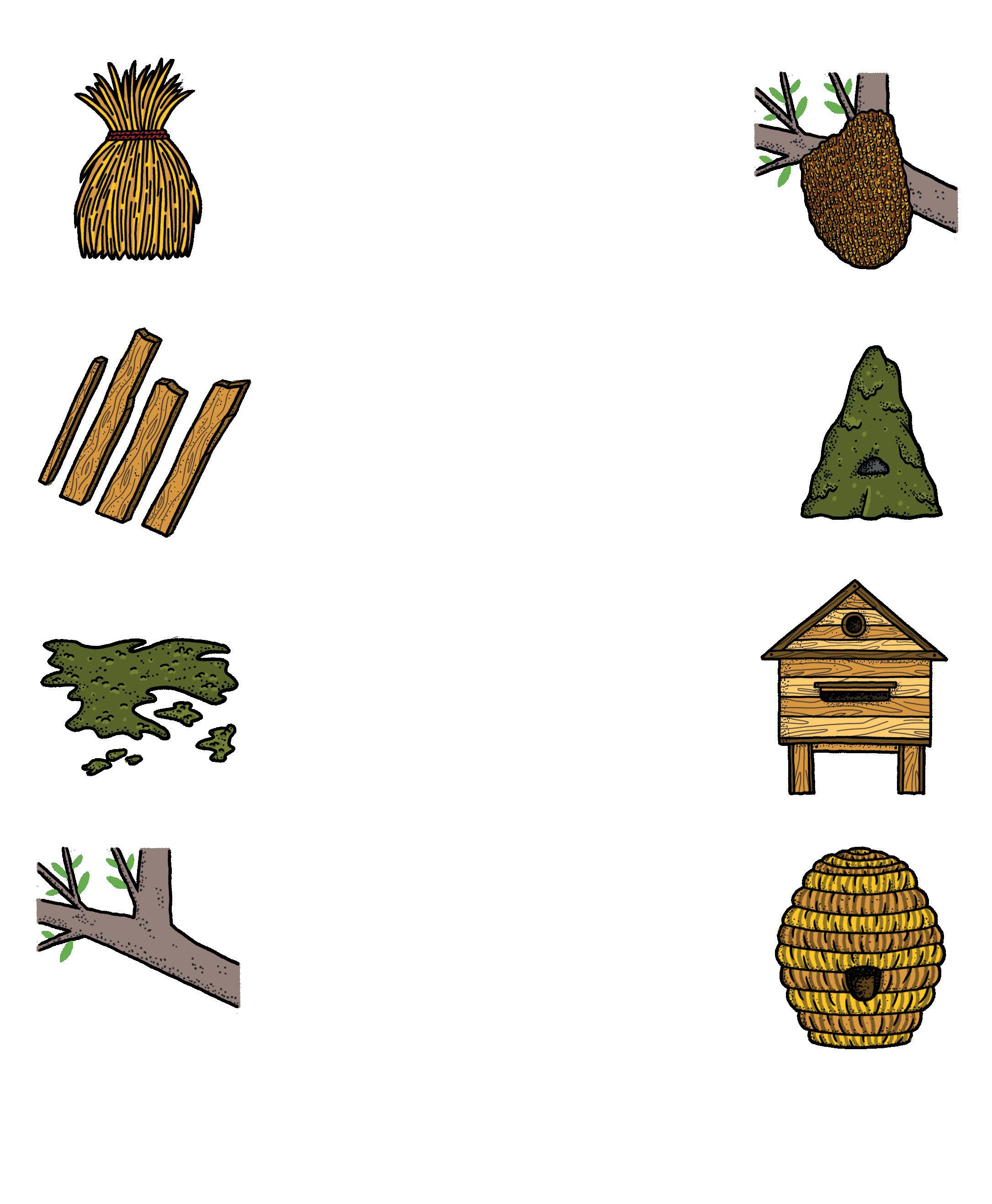

Invent your own beehive with the materials you think bees would like best.

Animal homes are very different. Match the animal with its home.
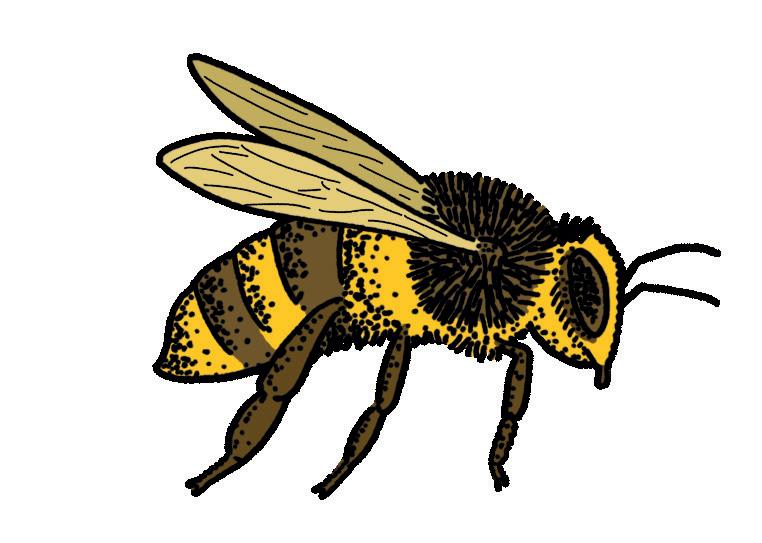

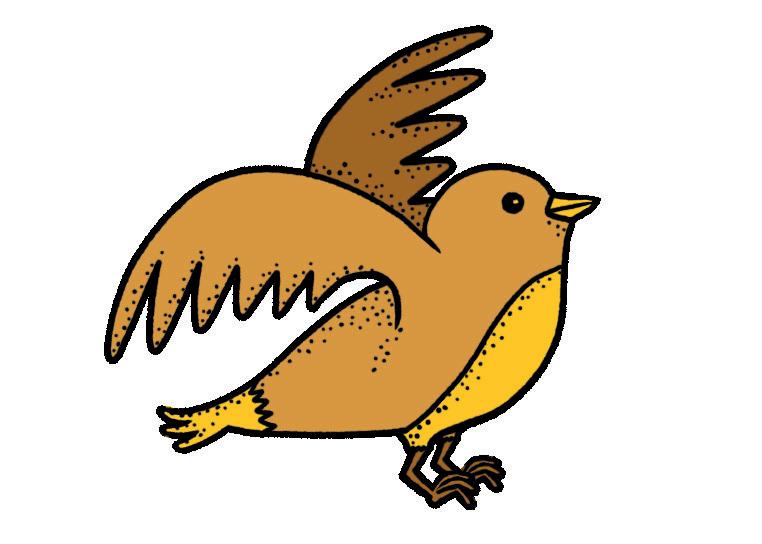
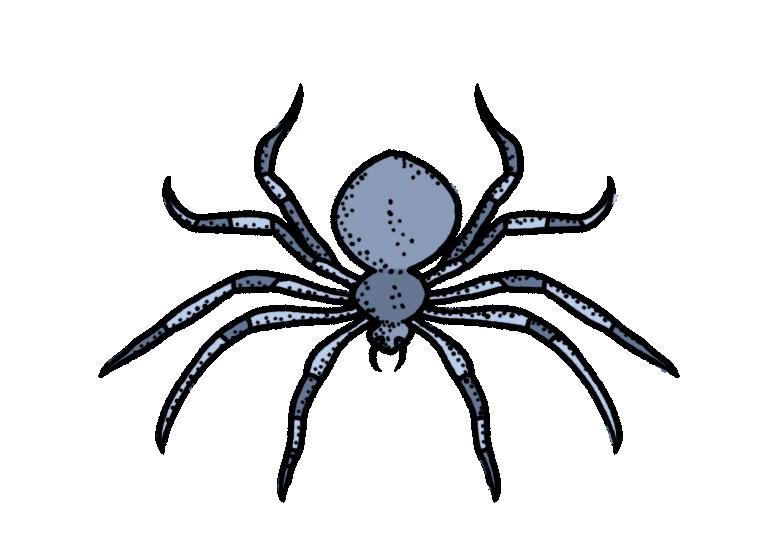
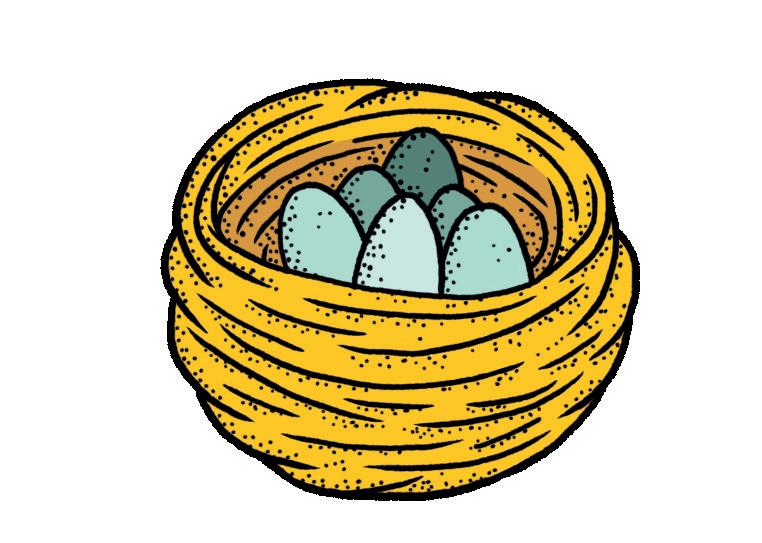
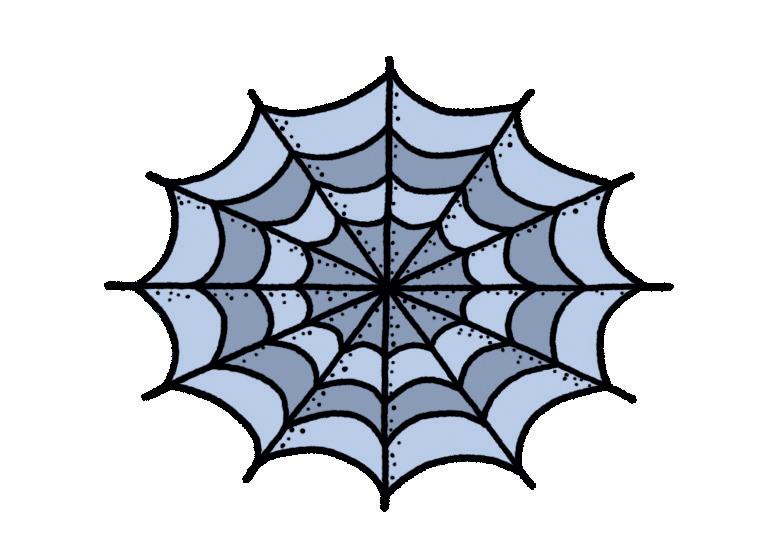
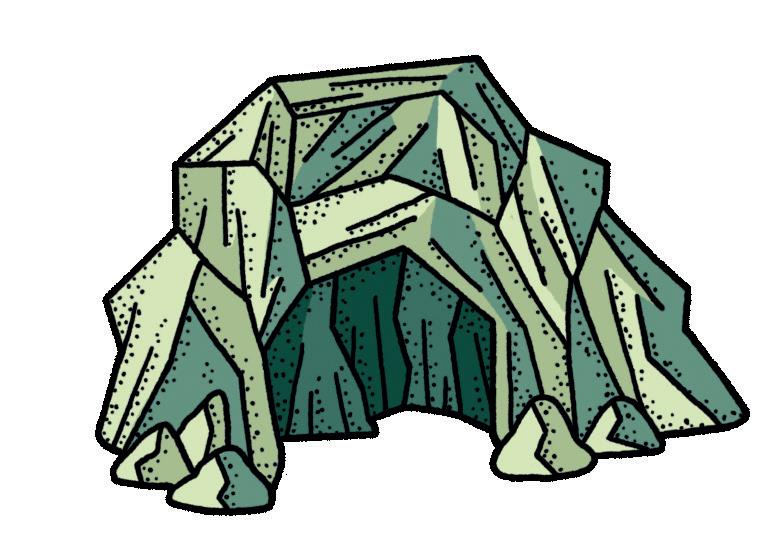
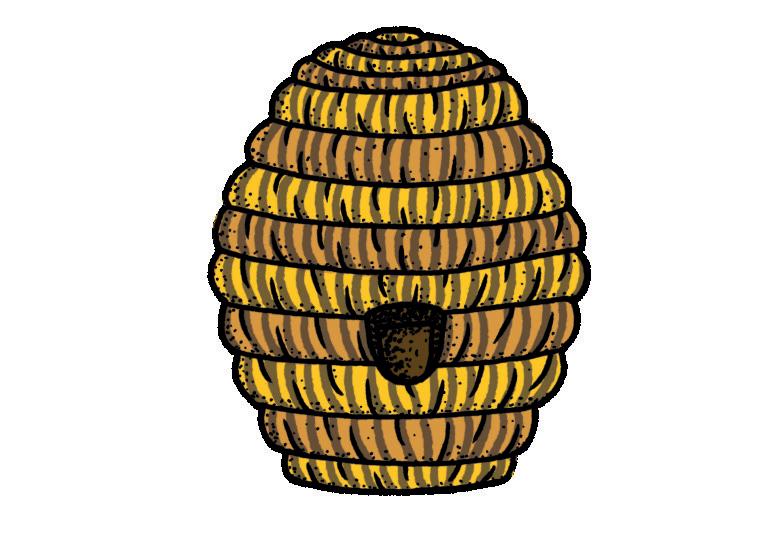

Draw your dream house

Now it’s your turn to find out where your favorite animal lives. Draw your animal in the box on the top and its home on the bottom. Then cut out the two boxes.

Complete the grid by connecting the dots and making as many hexagons as you can, without leaving any spaces. Then color the grid yellow to turn it into a honeycomb.
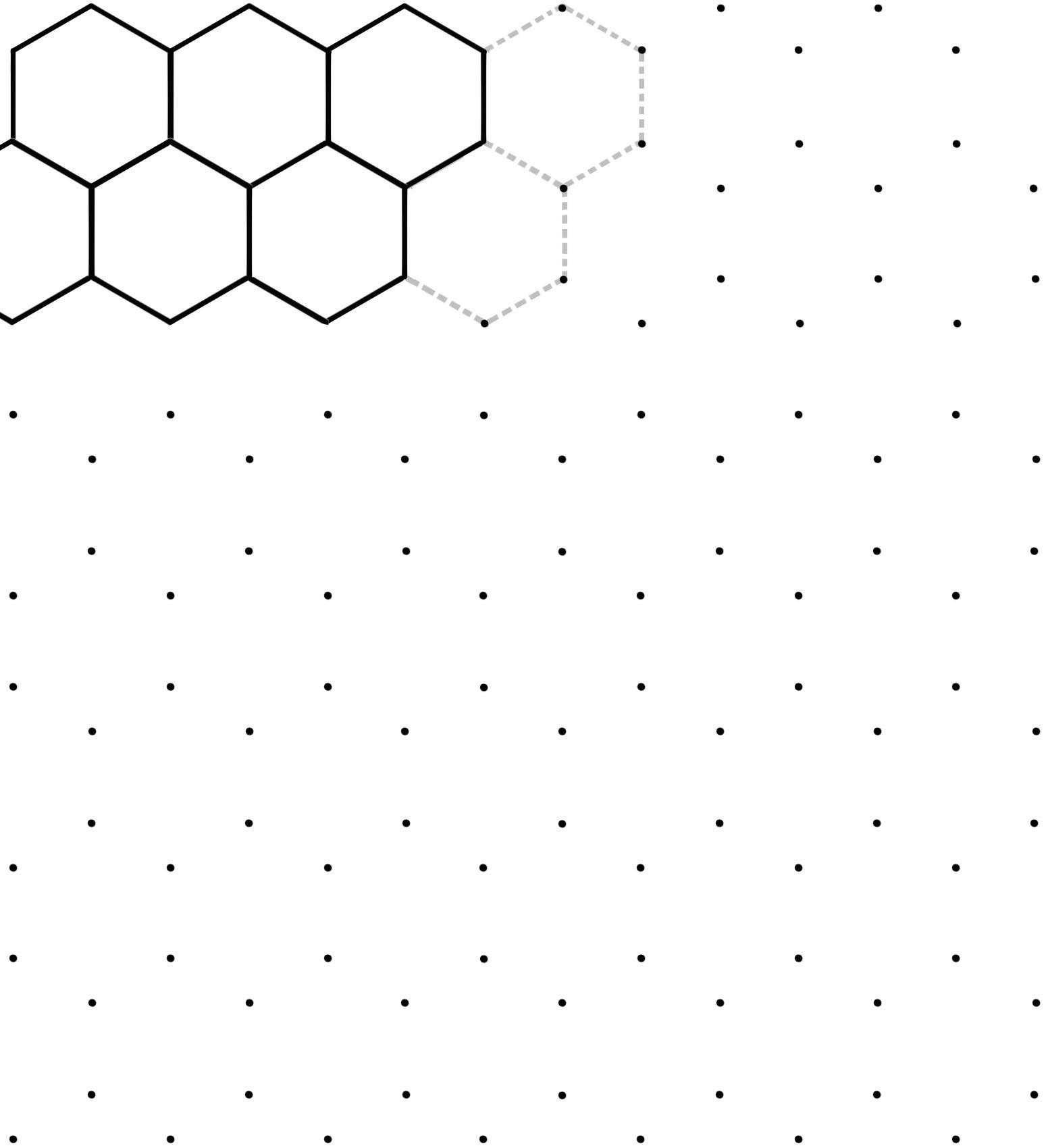

Hexagons and Honeycombs
Bees use their honeycomb as a storage cabinet. Each cell is a closet. Complete the honeycomb by adding pollen, honey or baby bees inside the cells.
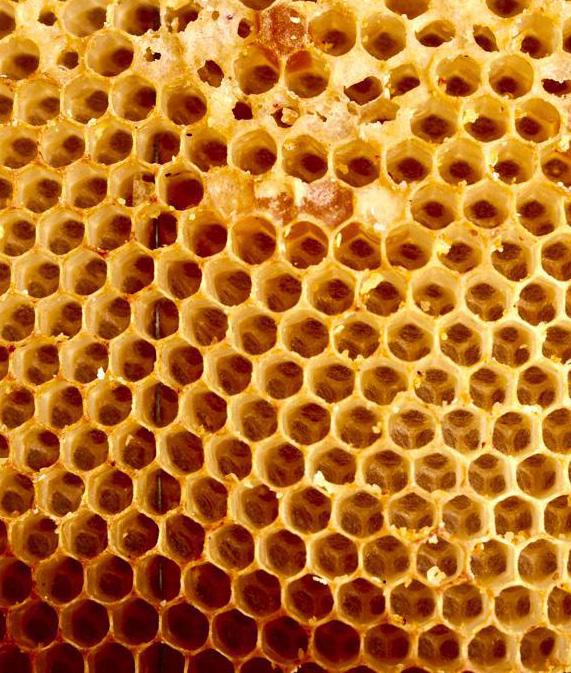

Shapes can be described with sides and corners (angles). Match the shape with its description.
A circle has no corners or side.
A square has 4 equal sides and 4 corners.
A triangle has 3 sides and 3 corners.
An oval is like a stretched-out circle. It has no corners and is long and round.
A hexagon is a shape with 6 sides and 6 corners.

A triangle looks like a mountain.
An oval is like a stretched-out circle, sort of like an egg.
Each little cell in the honeycomb in a beehive is shaped like a hexagon.
A square looks like a window or a crystal.
A circle is round like the full moon.

Use the bee on the side of the picture to measure the number of bees that are needed to connect each honeycomb section together. Count the bees it takes and write them down under each column of bees.



Measure your thumb, hand and foot below using the ruler on the page and find out how long they are.

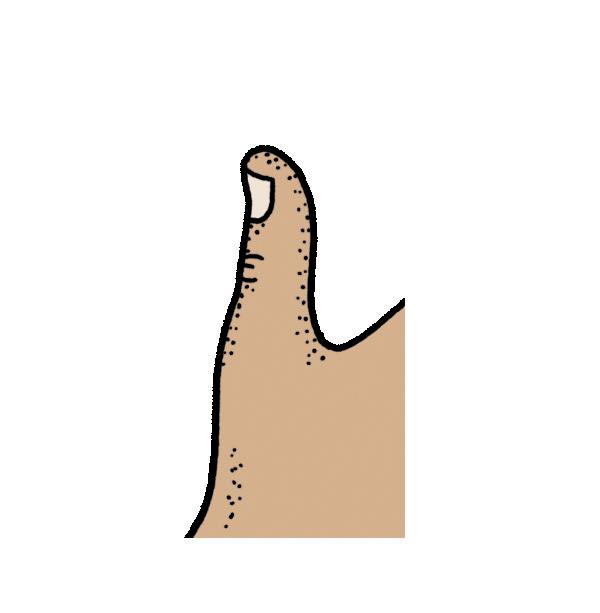
An inch was the width of a man’s thumb and is a unit of measure in the USA. It is 2.54 cm.

A hand is approximately 5 inches and is used to measure horses.

A foot is 12 inches and is used in the USA for measuring height, length, and distance.

Draw your bee inspired building in the box below. Award-Winning Bee Architecture

Bicycle (two wheeled bike)
(three cornered shape)
Quadruped (animal that walks on 4 legs)

Bee Architecture Hunt
Find a building in your city that looks like a hexagon or has hexagons in it and draw it here.
This city as as busy as a beehive! Color it in.


Beekeeper throughout Time
Listen to the legend of the Tupi-Guarani indigenous tribe about the importance of bees, then draw a picture to illustrate the story.

Below are some tools beekeepers use in order to take care of bees. Connect the right word with the tool.

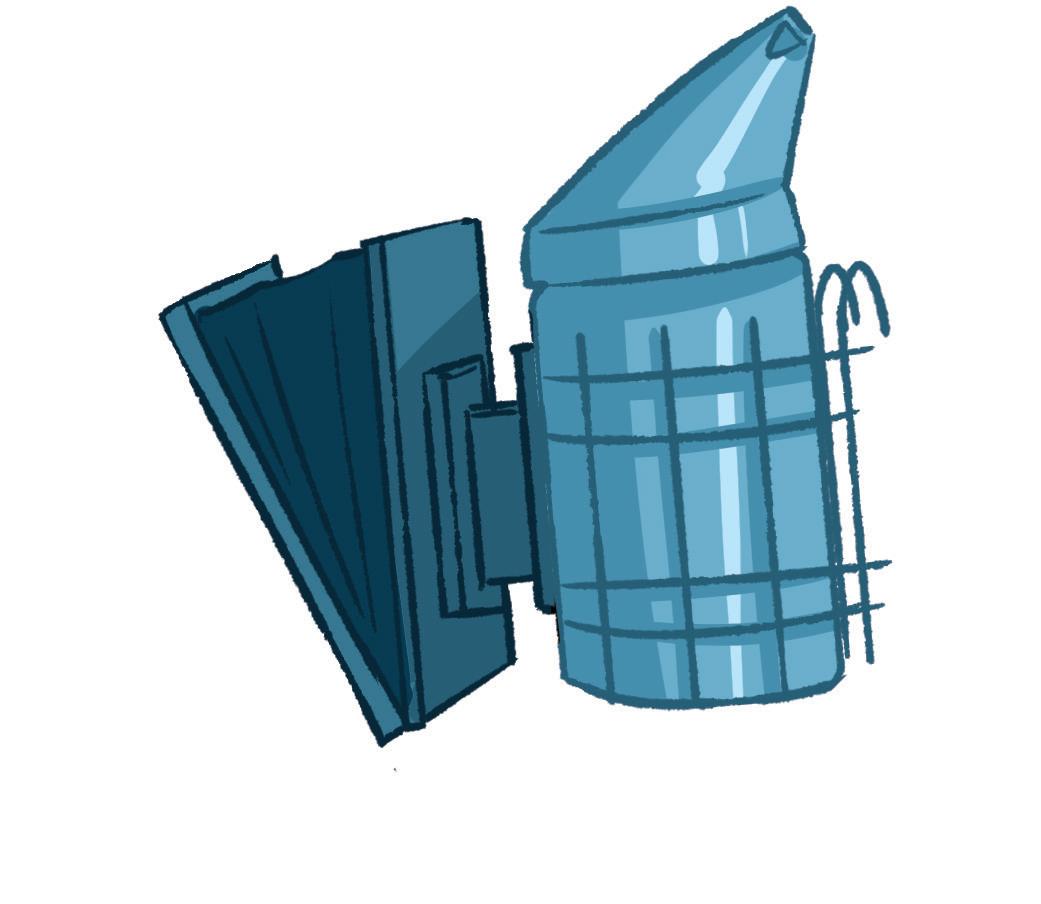
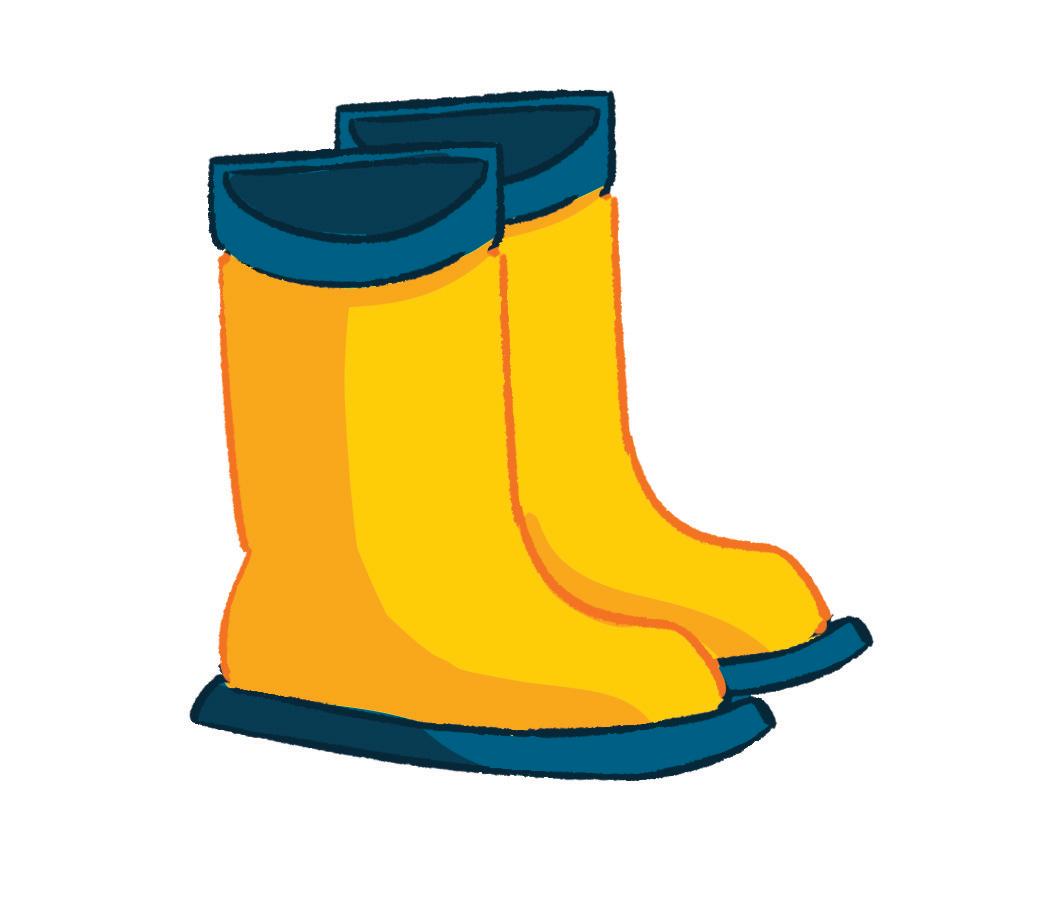



Draw the instructions above each explanation, then number the instructions in the right order.
- 1 cup of honey
- 1 cup of milk
- 2/1 cup of sugar
- 4/1 cup of cocoa powder
- 2 cups of all-purpose flour
- 1 teaspoon of baking soda
- 1 teaspoon of ground cinnamon
- 2/1 teaspoon of ground cloves
- 2/1 teaspoon of ground nutmeg
- 2/1 cup of melted butter
- 2 eggs ~
Combine Dry Ingredients: In another bowl, sift together flour, sugar, cocoa powder, baking soda, cinnamon, cloves, and nutmeg.
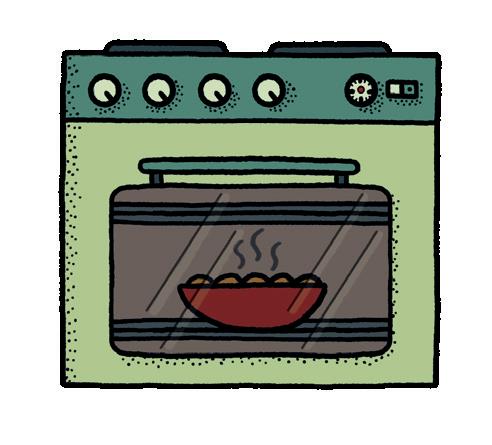
Preheat Oven: Set your oven to 175°C.
Bake: Pour the batter into a greased baking pan or muffin tin. Bake for about 20-25 minutes, or until a toothpick inserted into the center comes out clean, then let the honey bread cool.
Mix Wet Ingredients: In a bowl, mix honey, milk, melted butter, and eggs until smooth.
Blend Ingredients:
Gradually add the dry ingredients to the wet mixture, stirring until well combined.

The phrase « as sweet as honey » is called a simile, it is comparing something’s sweetness to honey. Match the other similes.
As sweet as
honey
As sour as a
As spicy as a
As salty as the
As bitter as

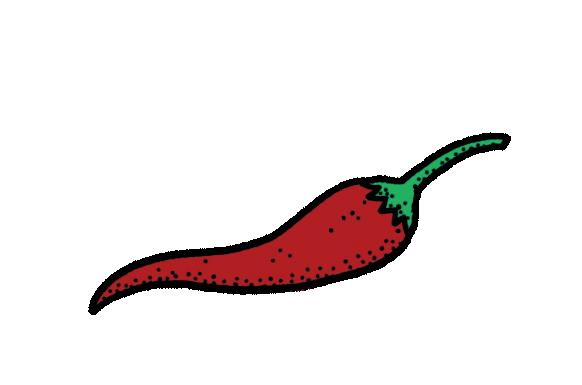

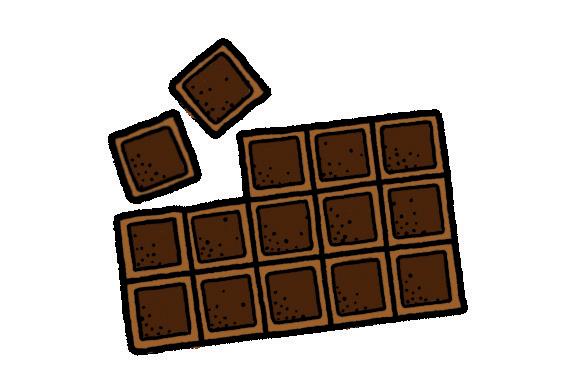


Beeswax: a Natural Material that Changes Form
Draw an arrow in the direction of how the item made of beeswax started pointing in the direction of how it changed.

A candle becomes soft and changes shape when it is lit up.
A bee eats the wax that makes up the honeycomb when it is hungry and has nothing to eat.
A beeswax crayon can change shape after it was used for coloring.


Make new words by joining the two smaller ones together. Then draw a picture of the new word you formed.
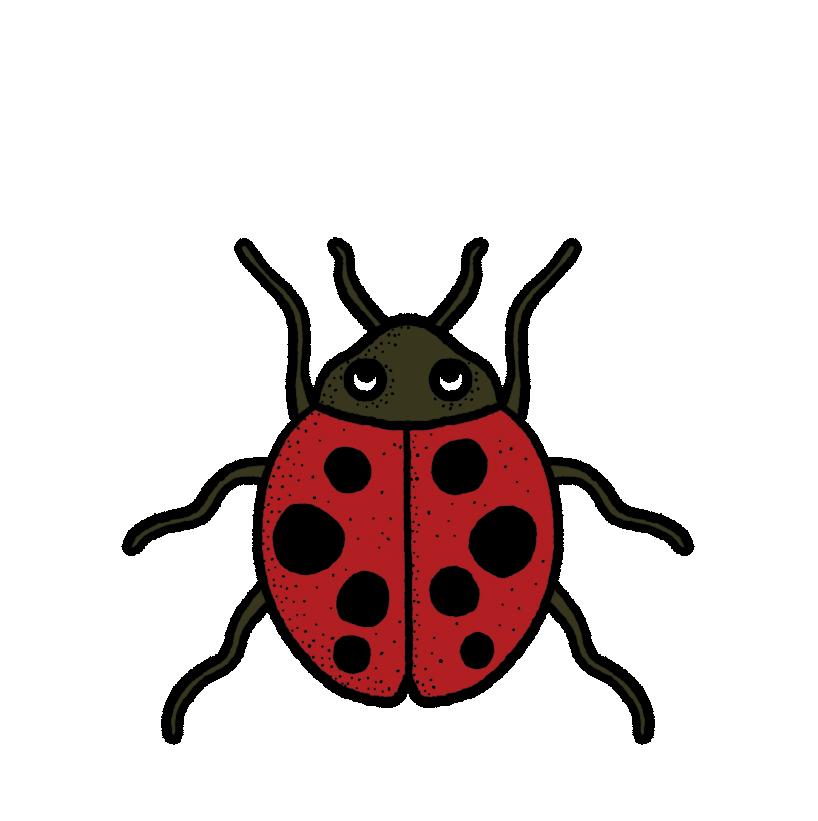
Bee + hive =
Rain + bow =
Sun + flower =
Butter + fly =

You can help solitary bees by creating Bee Hotels from recycled materials and installing them in your school garden. Design a Bee Hotel and draw it in the space below.

Finish these animal sayings by adding the correct animal drawing.

1. “ tears.”
Pretending to be sad.
If you start something early, you have a better chance of success.
3. “Let the out of the bag.” 4. “ out of water.”
To reveal a secret.
Feeling uncomfortable in an unfamiliar situation.
5. “Hold your .”
Be patient and wait.

Meet the Community
Visit a bee farm and draw a picture of it.

Make a Bee Manifesto of the things you’ll do together to help bees where you live.
Based on Just Bee© by Hoopla Education Pte. Ltd. 2023 Wilkie Road, 01-03#, Wilkie Edge, 228095, Singapore www.hooplaeducation.com
Published under license. First Published in 2024, by Macmillan Education do Brasil.
Author : Angelica Manca
Interior Illustrations : Ignazio Fulghesu
Layout & Cover Illustration : Louay Daoust
All Rights Reserved by Hoopla Education Pte. Ltd.
No part of this publication may be reproduced, stored in a retrieval system, transmitted in any form, or by any means, electronic, mechanical, photocopying, reading or otherwise, without the prior written permission of the publishers other than in legally stipulated exceptions.
Dados Internacionais de Catalogação na Publicação (CIP) (BENITEZ Catalogação Ass. Editorial, MS, Brasil)
M236j
1.ed. Manca, Angelica
Just bee / Angelica Manca ; ilustração de Ignazio Fulghesu. – 1.ed. – São Paulo : Macmillan Education do Brasil, 2024. 72 p.; il.; 20,5 x 27,5 cm.
ISBN 978-65-5752-662-0
1. Educação ambiental (Ensino fundamental). I. Fulghesu, Ignazio. II. Título.
10-2024/01
CDD 372.357
Índice para catálogo sistemático:
1. Educação ambiental : Ensino fundamental 372.357 Aline Graziele Benitez – Bibliotecária - CRB-1/3129
MACMILLAN EDUCATION DO BRASIL
Av. Brigadeiro Faria Lima, 1.309, 3º Andar –Jd. Paulistano – São Paulo – SP – 01452-002 www.macmillan.com.br
Customer Servic e: [55] (11) 4613-2278 0800 16 88 77
Fax: [55] (11) 4612-6098
Printed on recycled paper

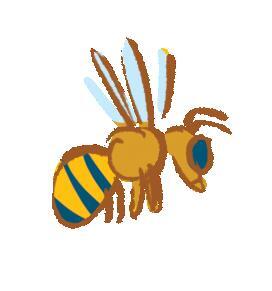


ISBN 9-786-5575-3662-0
